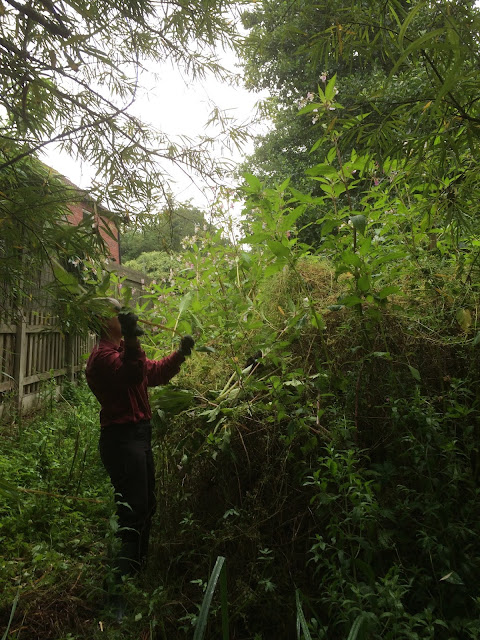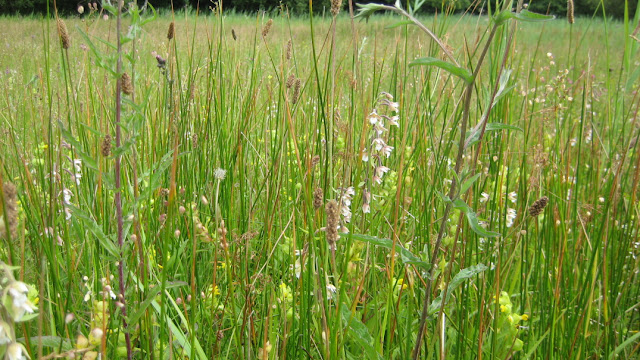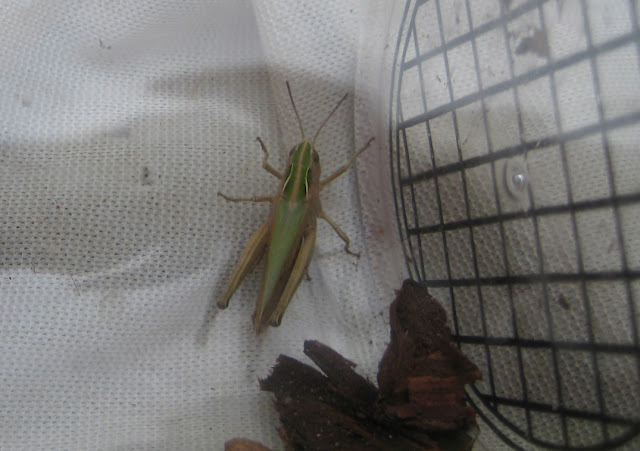Regular readers of this drivel blog will no doubt
wince each time at the grammatical errors and unwise punctuation that so
contaminate our postings. Happily, H.M. Government is aware of the falling
standards in general, and the newly re-issued Rees-Mogg style manual will be
your correspondent’s constant muse from now on. Whether you notice any
improvement is entirely a matter for you, dear reader.
One of the problems with trying to look after a wet area is
that even in times of low rainfall, plants grow strongly. Add a few downpours
and scorching heat, and you begin to understand what tropical vegetation looks
like.
That’s fine in a nature reserve, but even here there are
places where it’s not welcome. Walking the boardwalk had become an exercise to
test the adventurous spirit; you could begin to wonder if you were going to
make it out alive, or at least by tea-time.
Our very own exotic and invasive plant, the Himalayan Balsam
of which we have blogged so much before, had also taken the opportunity to
reach for the sky and was beginning to set seed; the very thing we try hard to
prevent. So although this was still July
and we were therefore not able to start the official cutting programme, there
was still plenty requiring our attention. The day was dull and a little drizzly
at first, and still rather humid, but at least that intense heat had dropped.
Perhaps it was this that encouraged an exceptional turnout of 20 volunteers to
arrive at the earlier than usual time of 9.00.
The plan was to have a couple of our recently qualified superstar
brush cutter operators trimming back the vegetation overhanging the boardwalk,
supported by a crack team of sweepers clearing the cut stuff to the side. That
plan had as a pre-condition that there were two working brush cutters: they
were checked the evening before and one was found to be unusable, but the other
worked well when tested. So at the start of the working party we were already
down by 50%. At that point, the ‘working’ one refused to start too. Now I’m not
too good at sums, but I reckon that took our deficit to 100%. To at least
partially mitigate the situation the trusty Grizzly was fired up and pressed
into service. Meanwhile, the superstar brush cutter operators tugged at the
starter cord; they fiddled with various controls; they muttered strange and
obscene incantations; in desperation they even consulted the manual. All to no
avail; how many men does it take to start a brush cutter?
Everyone dispersed to the various areas still hosting Balsam
plants, little white sacks in hand to contain the pernicious seed heads.
Himalayan Balsam thrives particularly well where the ground
is wettest, such as along Fox’s Beck. It especially enjoys growing on the far
bank, presenting the greatest challenge to the pluckiest of volunteers.
Or perhaps they just love a chance to dance…
Eventually, from the far-flung regions of the reedbed we
heard the throaty roar, stuttering at first but gradually gaining strength, of
the single brush cutter coming to life. Maybe it was just persistence; maybe it
was the use of strong language, or perhaps it was looking at the manual, but at
last the plan was at least partially back on course. Now those boys could use
their toys!
An hour in, and the Balsam was still not giving in. It has
always been good at hiding in brambles and nettles, but this year it seemed to
seasoned old hands that it has taken to keeping close company with bindweed. Is
this evolution in action? It certainly makes pulling the wretched stuff out
even harder. Incidentally, the most satisfying bit of the Balsam Bashing Process
is when you fold up the pulled-up stem prior to chucking it onto a pile of
earlier victims; it makes the most satisfying ‘phlock’ sound. It’s things like
that that give you the motivation to go on.
Such was the size of the turnout, there were not enough
sacks for every one of the plucky band of Flower Head Pluckers to have one of
their own to put the plucked flower heads in. Those without sacks had to find
other places to hold those plucked heads, for periodic decanting into someone
else’s sack. At least, I think that’s what’s going on here…
Anyway, an hour in also marked the half way point of the
working party, so we struggled back across the watercourse and retraced our
steps through the towering reeds to the welcoming storage container for a well-deserved
drink and custard cream. There is an expression ‘fill your boots’, but some of us had
already done that in crossing the watercourse. Soggy socks are never fun.
That done, it was once more unto the breach dear friends.
There was still plenty of Balsam to be found, and we lit upon an area where
they had reached gigantic proportions.
This is a rich vein for further exploration; watch this
space!
Meanwhile, back on the boardwalk, sterling work had been
done and the result is clear for all to see.
Despite everyone having had such fun, a halt had eventually to be called. The worst section had been dealt
with, but the rest is waiting.
Update 31st July:
A small but finely-honed crew returned on Wednesday to strim
some more, reaching the bridge over the Beck. To our great joy, both
brush cutters roared into life, achieving 100% capacity, as the statisticians
might say. With two superstar brush cutter operators backed up by two
moderately capable rake and broom operators, we got on really rather well. So
well indeed, that your correspondent unwisely recycled his ancient quip about
the rake’s progress. There’s still plenty more to do, but the worst sections
are now beautifully clear. Passing pilgrims taking their ease on the seat can
now contemplate the scene untroubled by the risk of missing tea.





























